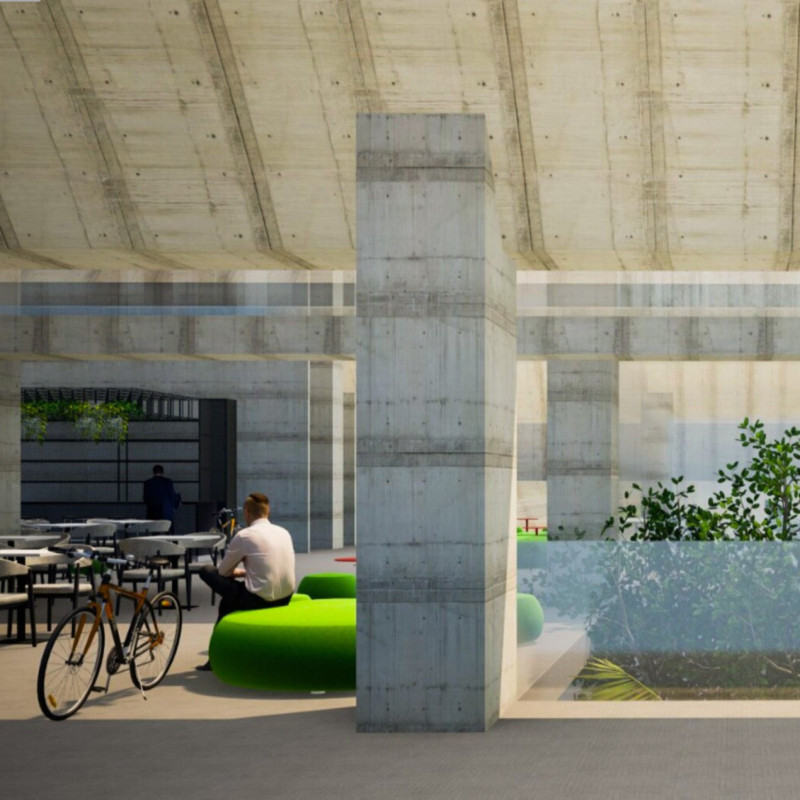5 key facts about this project
The primary function of this architectural project is to serve as a multi-purpose facility that accommodates diverse activities. From community gatherings to cultural events, it is designed to be an inclusive space that fosters interaction among its users. This aspect is vital, as it addresses the increasing need for public spaces that encourage socialization and collaboration in an ever-growing urban environment.
A notable aspect of the design is its spatial organization, which emphasizes openness and flexibility. The layout carefully considers how different zones—both communal and private—are arranged to facilitate movement and interaction while respecting the users' needs for privacy. Daylight floods through strategically placed windows and skylights, enhancing the interior ambiance while reducing reliance on artificial lighting. This thoughtful approach not only improves the user experience but also aligns with sustainable design principles.
Materials play a critical role in defining this project's character. A combination of reinforced concrete, glass, timber, and metal cladding has been utilized, each selected for its functional properties and aesthetic qualities. The concrete provides structural integrity and durability, while the glass introduces transparency and a connection to the outdoors, fostering an environment where indoor and outdoor elements seamlessly interact. The use of timber adds warmth and texture, promoting a sense of comfort within the space, and the metal cladding offers a modern touch, ensuring the building stands resilient against the elements.
Unique design approaches are evident throughout the project, particularly in how the architect has woven sustainability into its core fabric. The integration of green technologies such as solar panels and rainwater harvesting systems not only decreases the building's ecological footprint but also presents an archetype for responsible urban development. Furthermore, biophilic design elements are incorporated, drawing inspiration from nature to enhance the wellbeing of occupants. Gardens, living walls, and natural ventilation systems contribute to a healthier indoor climate.
The relationship between the building and its surrounding context is also a crucial consideration. The design respects and responds to the existing urban fabric, enhancing the area while ensuring that the new structure contributes positively to the local community's identity. The project encourages pedestrian connectivity and circulation, integrating pathways and outdoor spaces that invite public use and engagement.
Overall, the architectural design of this project exemplifies a commitment to making a meaningful contribution to both its users and the environment. Each detail, from the selection of materials to spatial configurations, underscores an overarching philosophy that champions connectivity, sustainability, and community interaction. Readers interested in gaining a deeper understanding of this innovative architectural project are encouraged to explore architectural plans, architectural sections, and architectural designs that detail its construction and design principles. Engaging with these elements will provide further insight into how this project stands as a thoughtful response to contemporary architectural ideas.


























